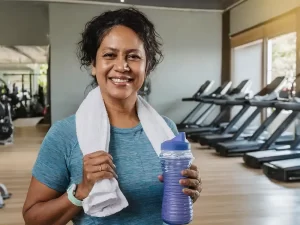Have you heard how great activated charcoal is?
What can you make with it? You’ll have to read on for a few of my favourite recipes.
Charcoal has been used for thousands of years for everything from preserving the dead – so they could pass over to the afterlife in ancient Egyptian rituals – to Native Americans using it to reduce gas from eating lots of beans. It has been used for body markings in ceremonies by African tribes and Australian Aboriginal communities, added to bread crumbs and used as a poultice by army surgeons and as a toothpaste and soap in India.
Animals routinely eat dirt and charcoal to help their digestion and in some cases like the Red Colobus monkey from Africa, to help digest the poisonous leaves they eat. Hippocrates (circa 400 B.C.), and then Pliny (50 A.D.), both proclaimed its use to help with numerous complaints, including poisoning.
However, it wasn’t until the activation process was developed around 1870-1920 that using it for health became more mainstream in Western culture. Poisoning is probably one of the main things it is known for today, as many hospitals use it with patients where there is suspected poisoning or drug overdose.
Hold on – isn’t charcoal bad for us?
Okay, so you’ve probably heard that eating burnt steak or toast is potentially carcinogenic and at the very least it isn’t good for us. So why is everyone raving about activated charcoal? Firstly, there’s a difference between activated charcoal and the charcoal you get when you burn wood on a fire. Activated charcoal (or activated carbon as it is also known) comes mostly from burning coconut shells at very high heats in the presence of oxidising gases such as CO2, steam, or air.
It can also come from bamboo, olive pits, bone char, peat or wood. This high heat causes the pore size of the material being burnt to shrink and become like a sponge that can suck up toxins much bigger than itself. Did you know, if you unfolded all of the surface area of just one teaspoon of activated charcoal it would be as big as a football field .
Manufacturers can also use chemicals such as acids like phosphoric acid or bases like potassium hydroxide, or salts like zinc chloride. This method is preferred as it requires lower heats and can be done in less time, but there is potential for contamination in the product. That’s why you want to check your supplier. It is best if the activated charcoal is organic, free of any metals, odourless and tasteless. You want the powder to be super fine, although you can also get it in tablets or capsules.
My favourite recipes
With all it’s amazing benefits Activated Charcoal is great to add to your favourite beauty products. Here are a couple of my favourite recipes:
Activated Charcoal Toothpaste
Have you looked at the ingredients in your oral care products? Activate charcoal is great for making a tooth whitening paste but added to toothpaste it helps with lots of other oral issues too. You can even add a teaspoon to your Thieves mouthwash to give it an added boost.

Ingredients
2 Tbs bentonite clay
½ tsp Bicarb soda
¼ tsp activated charcoal
4 Tbs water
8 drops Young Living Peppermint essential oil
Method:
Combine dry ingredients in a glass bowl and slowly add the water to make a paste. Use a wooden spoon rather than metal as the bentonite clay absorbs metal.
Add the essential oils.
Store toothpaste in a glass jar.
Activated Charcoal Deodorant
Charcoal is great for reducing body odour, particularly under our arms. Just be careful when wearing white or light coloured clothes or even bras.
Ingredients
2 Tbs coconut oil 2 tsp shea butter
1 tsp beeswax
1 Tbs bentonite clay
5 Tbs arrowroot powder
½ tsp activated charcoal
5 drops orange essential oil
3 drops patchouli essential oil
3 drops rosemary essential oil
2 drops lavender essential oil
1 drop lemon essential oil
Method:
Melt the coconut oil, shea butter and beeswax in a double boiler. Stir until all ingredients are melted.
Combine the bentonite clay and arrowroot powder in a glass bowl.
Stir oil/wax/butter mix in to the powders until combined.
Add in the essential oils
Pour in to empty deodorant containers.
Activated Charcoal Mask
Activated charcoal is a great skin cleanser. This recipe is particularly good for those people with problem skin.
Ingredients:
1/8 tsp activated charcoal
1 tsp Bentonite clay
1-2 tsp water
1 drop Young Living Tea Tree essential oil
Method:
Mix the bentonite clay with activated charcoal
Add in the water to make a paste and then add in the drop of essential oil.
Patch test before applying to the face
Apply to skin and leave for 10-15 minutes
Rinse off
Amazing Charcoal Bar Soap
Have you tried the new Young Living Charcoal Bar Soap?
Made with the powerful absorption properties of activated charcoal, Young Living’s Charcoal Bar Soap pulls out dirt and impurities without stripping the skin’s natural moisture barrier. Its naturally derived formula includes powerful skin-cleaning agents, moisturizing ingredients, and the bright, fresh scent of our Orange Blossom essential oil blend. Use it for your body to cleanse and deodorize, or add it to your skin care routine. The unique benefits of charcoal soap make it an especially suitable face soap for combination, oily, or acne-prone skin to help maintain a clear, healthy-looking complexion.
Benefits and Features
– Formulated with skin-purifying activated charcoal and pure essential oils
– Leaves skin clean, soft, and smooth
– Made without sulfates, phthalates, parabens, dyes, synthetic fragrances, or preservatives
– Vegan-friendly and cruelty-free
– Cleanses excess oil without stripping the skin
Why not add one to your next order?










 Subscribe to Hot Oily Mumma
Subscribe to Hot Oily Mumma